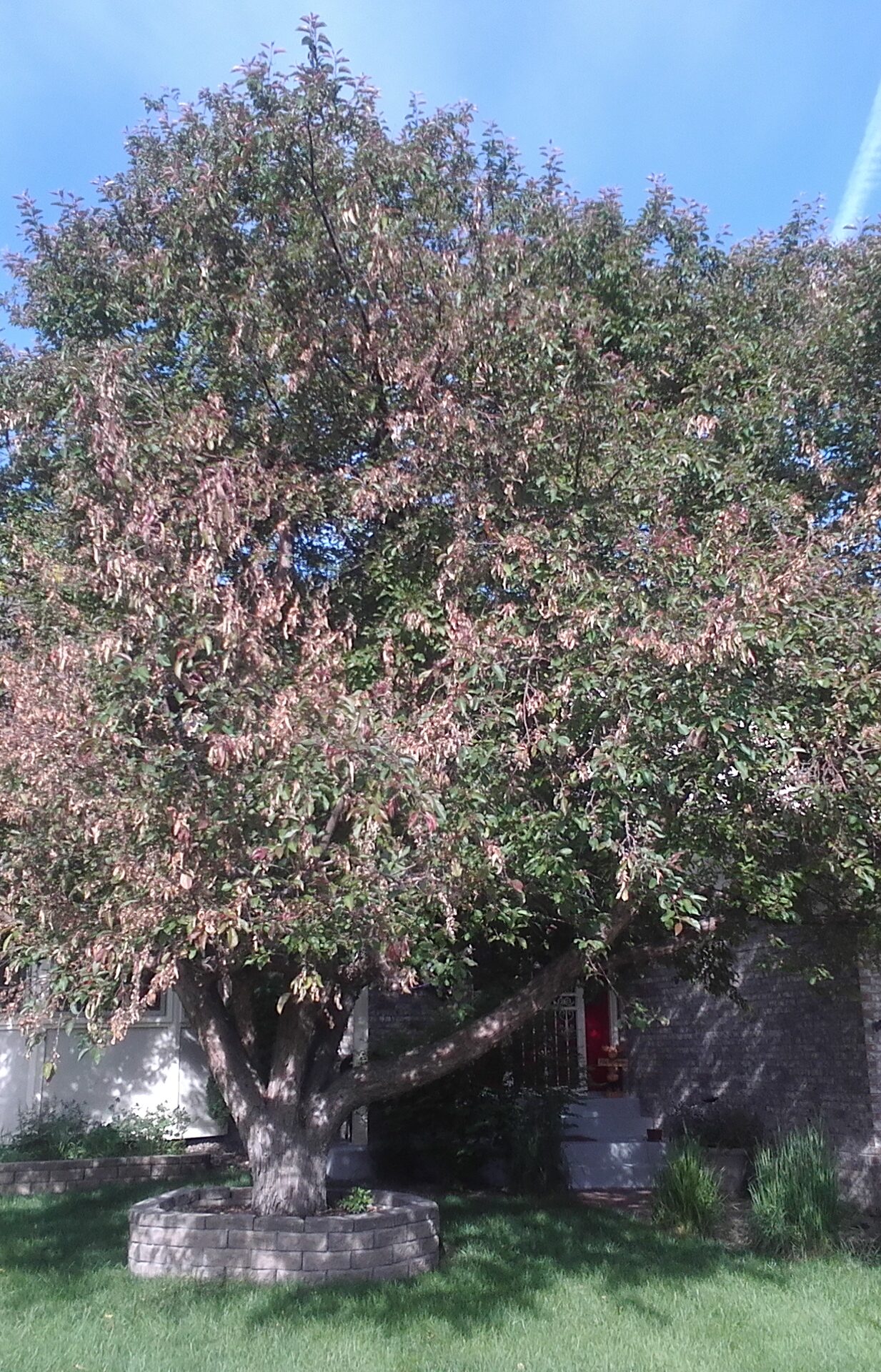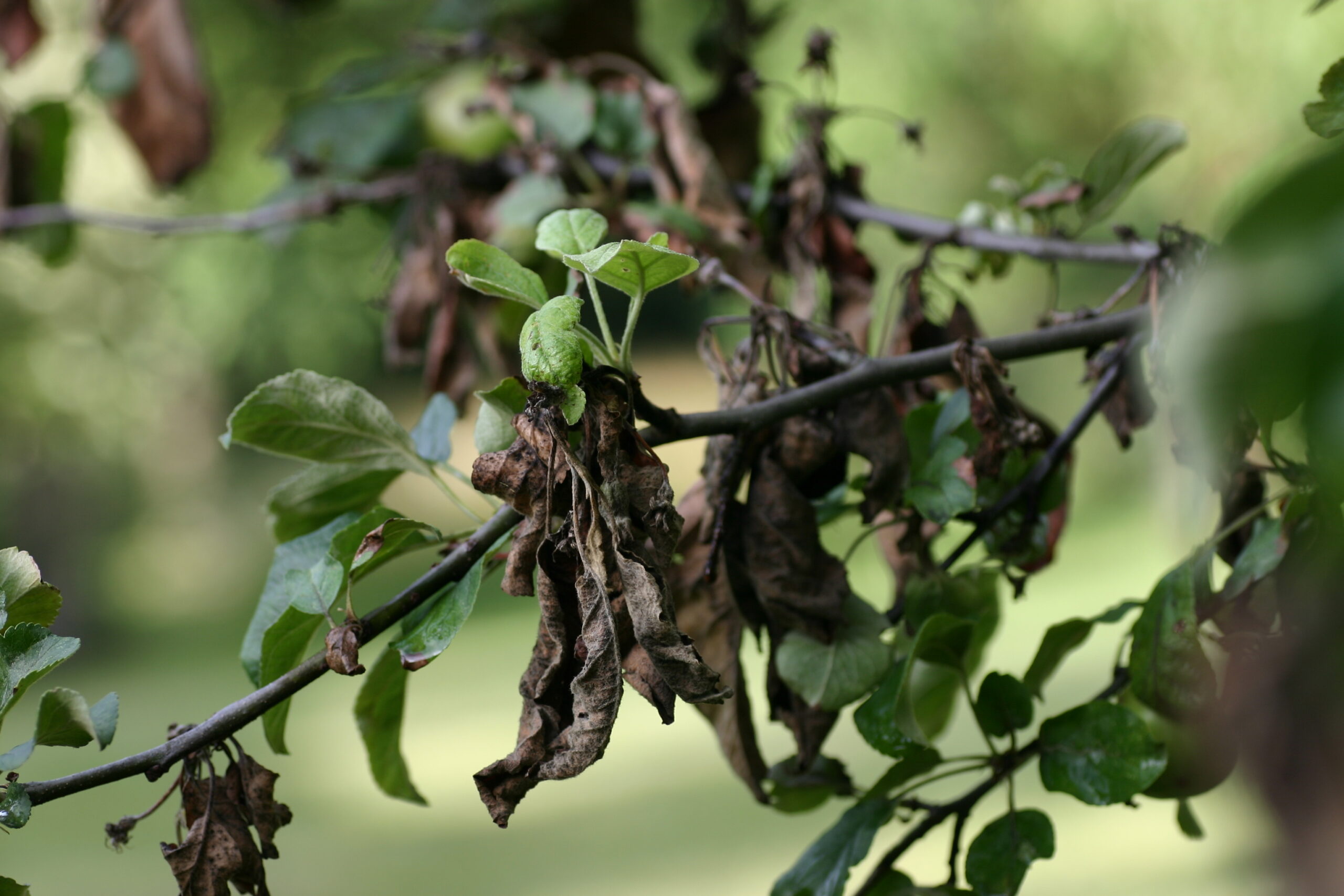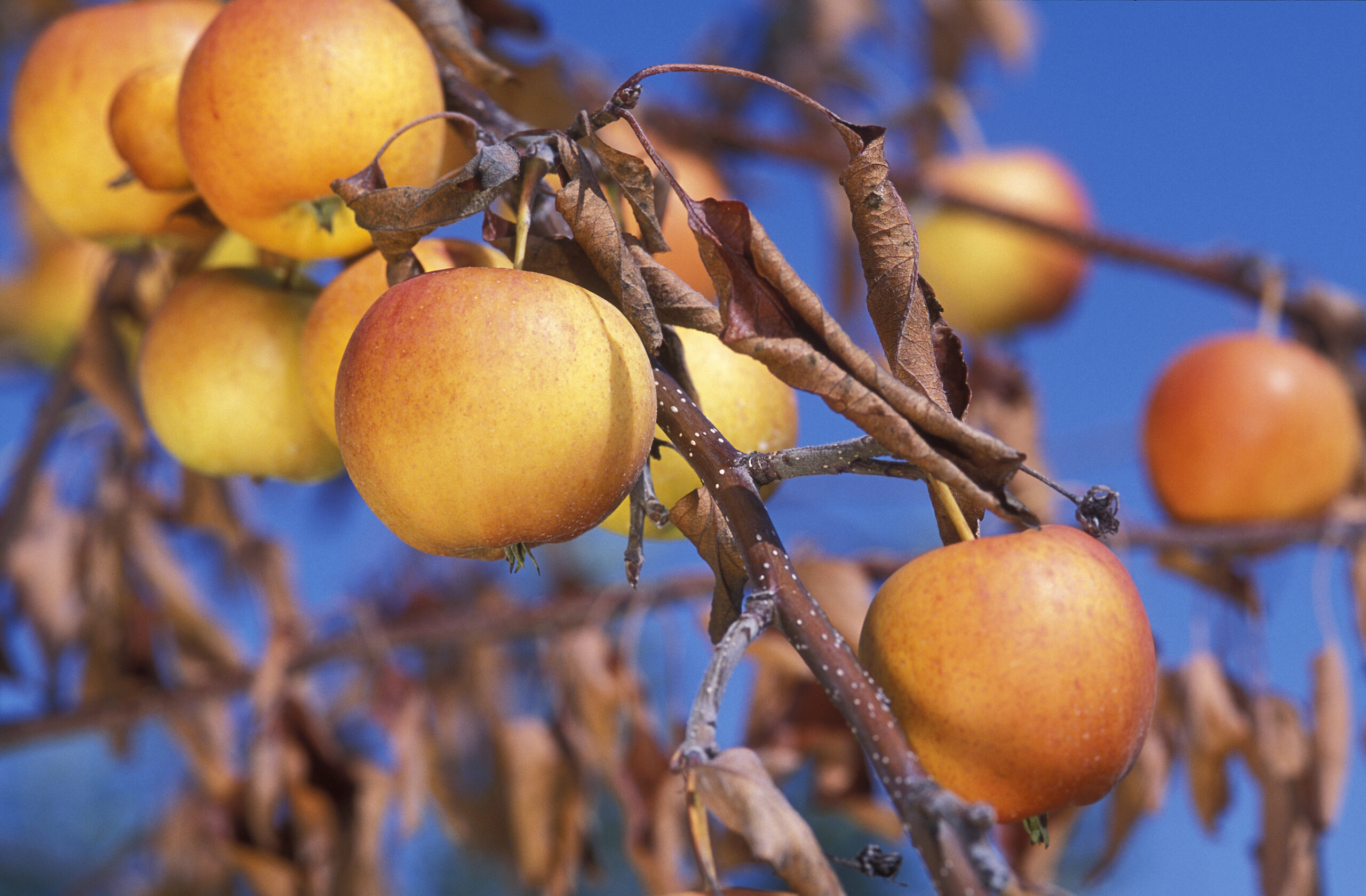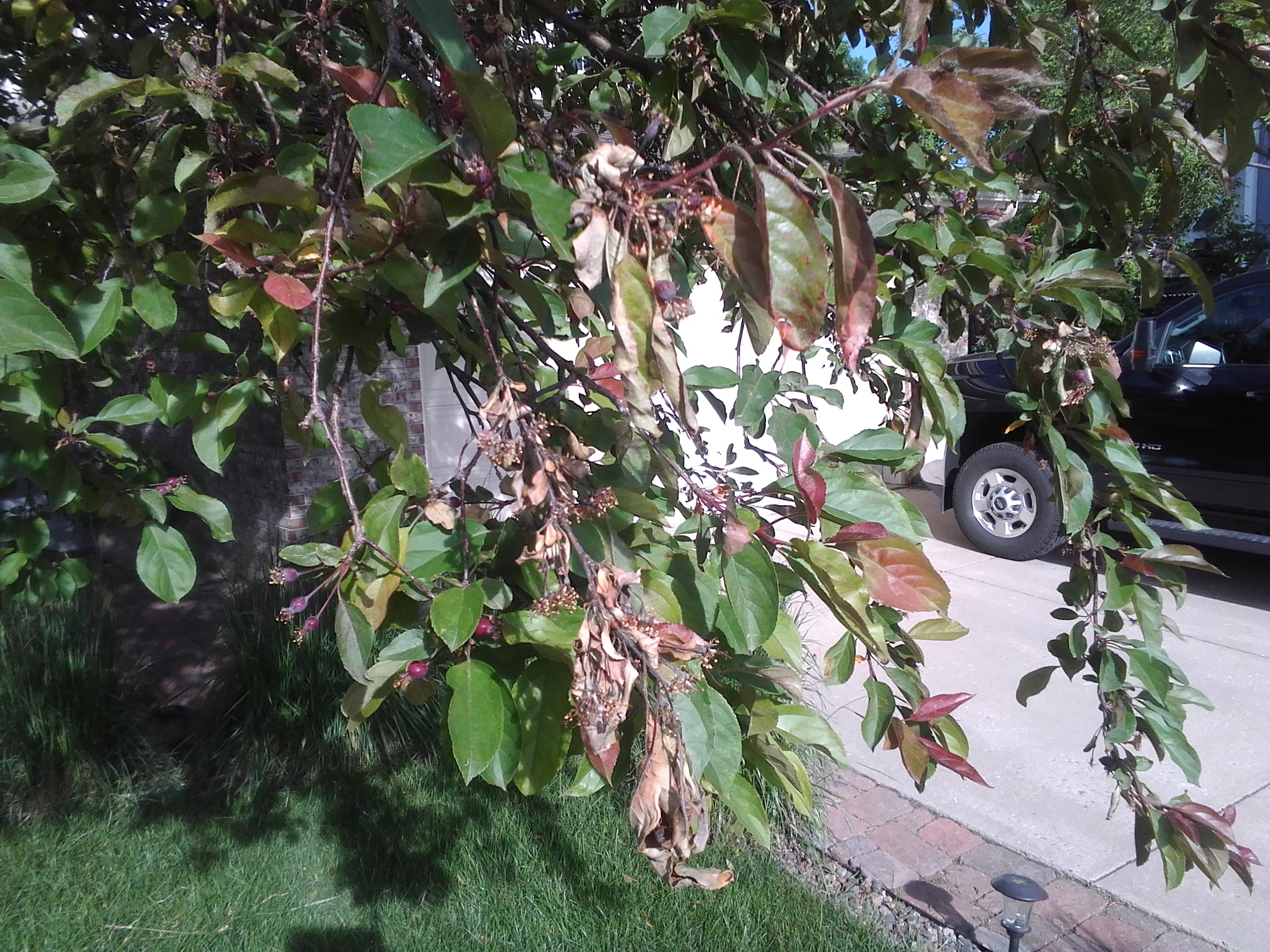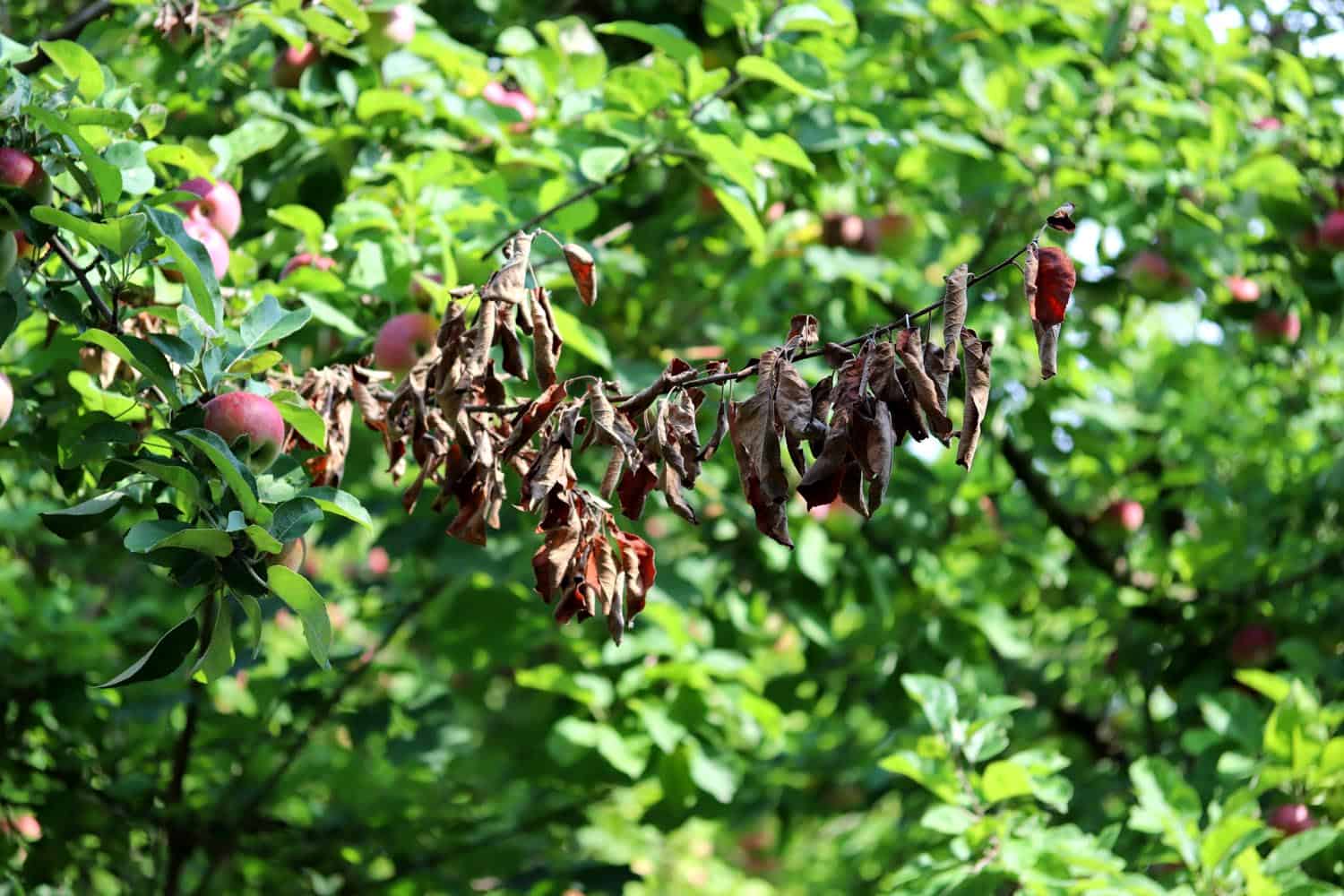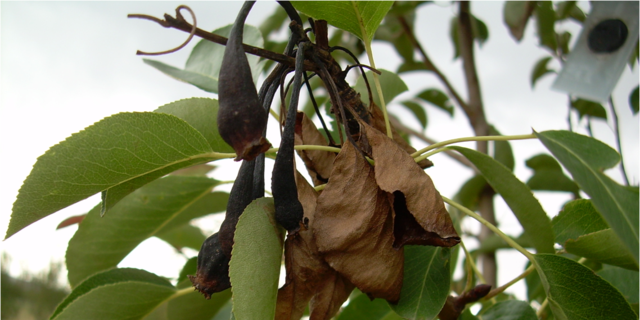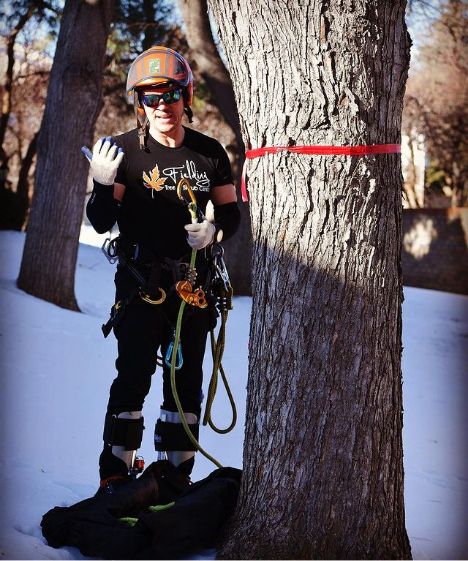Service
Fire Blight Treatment & Prevention
Welcome to Fielding Tree Care: Your Trusted Partner in Fire Blight Treatment and Tree Health in South Denver, CO.
Fire Blight Treatment in South Denver, CO
How Fielding Tree Care Can Help You Fight Fire Blight on Your Property
- Comprehensive Fire Blight Assessments
Schedule a free consultation with our professional arborists to assess the current health of your trees. We conduct thorough inspections to identify signs of fire blight and determine the best course of action for treatment. - Tailored Treatment Plans
Every tree is unique, and so are our treatment plans. Fielding Tree Care crafts personalized solutions based on the specific needs of your trees, ensuring effective and targeted treatment for fire blight. - Ongoing Prevention and Maintenance
Prevention is key. Our team provides ongoing maintenance services to monitor the health of your trees and implement preventative measures, safeguarding them against future outbreaks of fire blight.
Don’t Wait Until It’s Too Late
Why the urgency? The emergence of fire blight in South Denver demands prompt action.
Picture this: the picturesque landscapes of South Denver, the vibrant greenery that graces your property. Now imagine that beauty under threat from a silent, yet destructive force – fire blight. In recent years, the spread of fire blight in Colorado has become an urgent concern, affecting various tree species.
The warm and dry climate of South Denver provides an ideal environment for the rapid spread of this disease. If left untreated, fire blight can decimate entire tree populations, leading to not just aesthetic losses but also potential safety hazards.
Tree Disease Prevention Services
The Best Fire Blight Treatment and Prevention In Denver
At Fielding Tree Care, we understand the critical importance of preserving the health and beauty of your trees. We believe it is imperative that you take preventative measures as soon as possible to protect your landscape from this disease. Because the unfortunate truth is, there is no way to completely cure a tree that is infected with fire blight. Our professional arborists are dedicated to providing top-notch tree pest and diseases prevention services, with a specific focus on combating the prevalent issue of fire blight in South Denver, CO.
As your local tree care experts, we take pride in offering tailored solutions to ensure the well-being of your trees, so even though there is no cure for fire blight, we offer various fire blight treatment options. Please schedule a free consultation with one of our professional arborists to determine the best plan of action regarding your trees. We are well-versed in the specific tree species affected by this disease in the south Denver region, enabling us to tailor our treatment plans accordingly.
Image via Wikipedia
Fire Blight Treatment Services
Treatment Options for Fire Blight
Once a tree falls victim to fire blight, achieving a complete cure becomes an unattainable goal. However, diverse treatments exist to mitigate the impact and manage the spread effectively.
-
Pruning for Fire Blight Treatment:
Winter pruning stands out as a highly effective method to eradicate heavily infected areas. Conducting trimming during the winter months ensures that trees endure minimal damage, providing them with ample time to heal. This approach minimizes stress on the trees, significantly reducing the risk of further infection. Following the trimming process, implementing one or more chemical treatments becomes essential. The dormant state of the bacterial infection during winter allows arborists to prune without the need for disinfectants.
-
Trunk Injection – An Antibiotic for Trees:
In the human body, an antibiotic fights infections, and for trees battling fire blight, our specially designed trunk injection serves as the equivalent. Administered annually during April-May, this treatment, likened to an antibiotic for trees, is recommended every two years to mitigate potential trunk damage. It primarily targets the twig stage of infection, offering optimal results when applied before visual symptoms appear.
-
Soil Injection for Controlled Growth:
Employing a growth regulator through soil injection marks a strategic approach during the tree’s growing season. This treatment, effective for three years, plays a crucial role in managing fire blight in infected trees by minimizing shoot growth. By curbing shoot growth, it effectively addresses the shoot blight stage of a fire blight infection.
Metro Denver Tree Service
Our Denver Tree Company Service Area Includes
South Denver, Littleton, Centennial, Highlands Ranch, Englewood, Lone Tree, Castle Rock, Parker, Greenwood Village, and all previous customers in the metro Denver area.
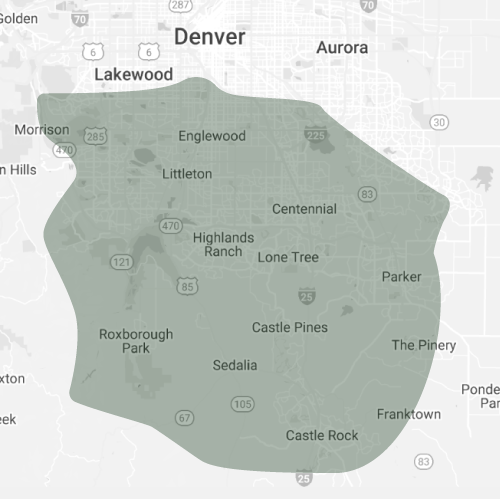
Resources
Latest Articles on Fire Blight Treatment and Prevention in South Denver, CO
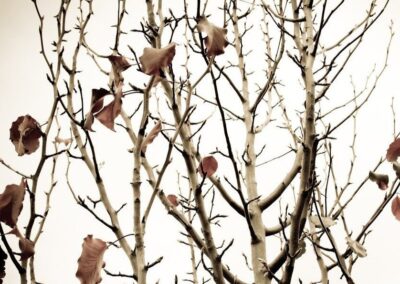
5 Tips for Winterizing Trees and Shrubs in Littleton and South Denver
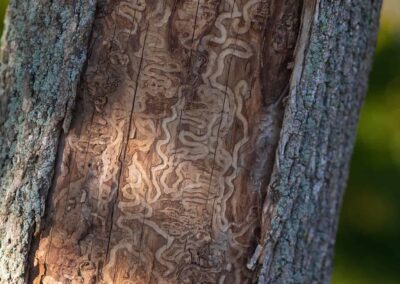
An Arborists Glossary of Pests and Diseases
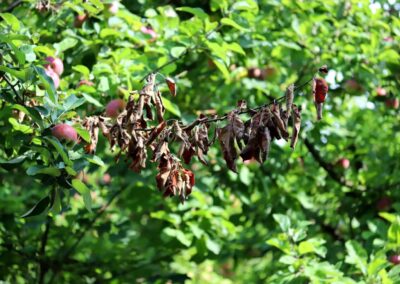
Fighting Fire Blight of Apple, Pear, and Other Colorado Trees
Understanding Fire Blight Symptoms and Identification
Fire blight, caused by the bacterium Erwinia amylovora, poses a significant threat to pome fruit trees and related plants, especially in South Denver, CO. Recognizing the symptoms and identifying the infection early on is crucial for effective fire blight treatment.
Identification of Fire Blight
-
Watery Bacterial Ooze:
In spring, as trees begin active growth, a key indicator of fire blight is the appearance of a watery, light tan bacterial ooze. This oozing substance emerges from cankers on branches, twigs, or trunks. Upon exposure to air, the ooze darkens, leaving distinctive streaks on branches or trunks.
-
Blackened Fruit:
Blackened fruit is a typical sign of fire blight infection. The disease can affect open flowers, causing them to wilt and turn black on pear trees and brown on apple trees. The amount of fruit loss depends on the extent and severity of the disease.
-
Infected Flower Clusters:
Fire blight infections often target flower clusters, especially in open flowers, making them susceptible until petal fall. Infected flowers and flower stems wilt and turn black on pear trees and brown on apple trees.
-
Branches and Shoots:
The disease can extend into twigs and branches, causing small shoots to wilt and form a distinctive crook at the end of each infected shoot. Succulent tissues of shoots and water sprouts are also susceptible to infection.
-
Red-Streaked Wood:
When the pathogen spreads from blossoms into wood, the newly infected wood underneath the bark exhibits pink to orange-red streaks. These streaks represent new infections caused by the invading bacteria.
Damage Caused by Fire Blight
-
Fruit Loss:
The disease can lead to significant fruit loss, especially during the flowering and fruit-setting stages. The severity of the loss depends on the extent of the infection.
-
Tree Scorching:
Fire blight infections can cause dead, blackened leaves and fruit to cling to branches throughout the season, giving the tree a scorched appearance.
-
Canker Expansion:
The pathogen tends to move from the infection site towards the roots, causing cankers to expand. As the canker grows, the infected wood dies, turns brown, and dries out, leading to sunken areas and cracks in the bark.
Life Cycle of Fire Blight
-
Overwintering in Cankers:
Fire blight bacteria overwinter in cankers on twigs, branches, or trunks of host trees. In spring, when the weather becomes warm and moist, a small percentage of cankers become active as bacteria multiply and ooze from branch or twig surfaces.
-
Transmission to Blossoms:
Splashing rain or insects transmit the bacteria to nearby blossoms or succulent growing shoots. Once blossoms are contaminated, honey bees can efficiently carry the pathogen.
-
Ideal Conditions for Infection:
Ideal conditions for infection, disease development, and pathogen spread include rainy or humid weather with daytime temperatures from 75° to 85°F, especially when night temperatures stay above 55°F.
-
Pathogen Movement in Trees:
Fire blight bacteria invade healthy wood by moving in narrow paths in the outer bark ahead of the main infection. The pathogen tends to move towards the roots in trees.
-
Influence of Tree Vigor:
Tree vigor significantly influences the extent of fire blight damage. Vigorously growing shoots are more severely affected, and conditions favoring rapid shoot growth increase the severity of damage.
Conclusion
Early detection of fire blight symptoms is crucial for effective treatment. If you observe signs of fire blight in your trees in South Denver, don’t hesitate to schedule a free consultation with Fielding Tree Care. Our expert arborists are ready to assess and treat your trees promptly, preserving the health and beauty of your landscape.
Resources
- https://fieldingtreecare.com/fighting-fire-blight-of-apple-pear-and-rose-family-trees-in-colorado/
- https://www.9news.com/article/weather/fall-colors/false-fall-leaves/73-b7075778-821c-4de2-941c-8f1d3b6d6265
- https://www.denverpost.com/2018/11/01/colorado-trees-fire-blight/
- https://extension.colostate.edu/docs/pubs/garden/02907.pdf
- https://planttalk.colostate.edu/topics/insects-diseases/1411-fireblight/
- https://www.bigtoolbox.com/process-to-cure-fire-blight/
Now Is The Time To Protect Your Vulnerable Landscape from Fire Blight.
Book your free consultation with one of our ISA-certified arborists. Take the first step to protect your property from fire blight today!
